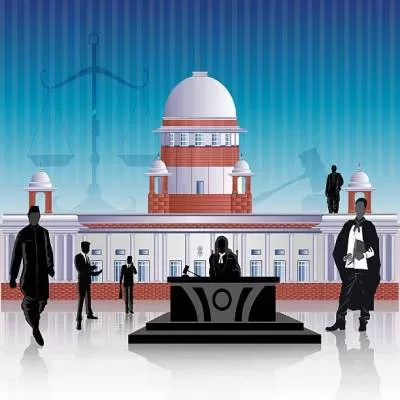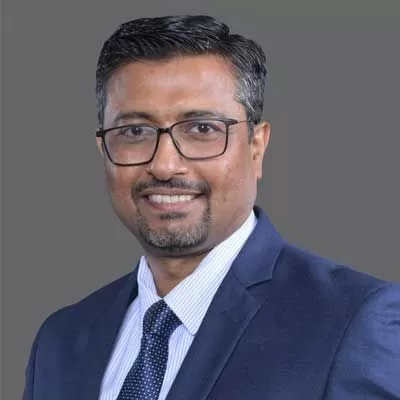- Home
- Infrastructure Urban
- ECONOMY & POLICY
- In FY16, the wholesale division lent Rs.15,320 crore

In FY16, the wholesale division lent Rs.15,320 crore
In just nine years of being in business, L&T Infrastructure Finance (L&T Infra Finance) is one of the select few to be classified as an infrastructure finance company (IFC) and, since 2011, as a public finance institution (PFI) by the Ministry of Corporate Affairs. The company´s services include project finance in sectors such as power, telecom, roads, water, oil and gas, among others. Virender Pankaj, Chief Executive, L&T Infrastructure Finance, shares more on the company´s lending options and an industry perspective in conversation with CW.
You have over 25 years of expertise in project finance, project appraisal, working capital, corporate finance, etc. How do you plan to bring in this expertise to grow L&T Finance?
L&T Financial Services operates in identified areas of wholesale finance in the domains where we have a reasonable degree of expertise in terms of sector understanding and financial structuring capabilities. It is these strengths that enable us to offer customised solutions to our clients´ financing requirements. We have clearly defined which sectors and products to focus on to derive sustainable returns. Growth in these sectors and products is a function of the economy´s health and our ability to generate market share profitably. Learnings from previous economic and industrial cycles and stressed projects are useful in designing our sector-wise strategies.
My conclusion based on all the experiences is that lenders should undertake focussed lending in chosen areas of expertise and competence rather than trying to be generalists and hoping to ride economic cycles. In addition to our in-depth sector knowledge, efficient transaction processing and management capabilities, certain factors that set us apart from the competition are:
An ability to underwrite transactions in our strength areas; renewables, operating roads and transmission, to name a few.
Speed of execution.
Flexibility: Competitive pricing, securitisation, refinancing, multiple pre-payment windows.
Transparency: No hidden costs.
An intensive appraisal process for all transactions or approvals.
Lending business is backed by sector specialists, who continuously monitor our portfolio and help design product frameworks.
A differentiated risk management framework that helps us balance the risk-reward matrix.
Tell us about the company´s funding models for project finance for construction and infrastructure projects.
Our approach to project finance, refined over many years, is that we first develop a robust project selection model that encompasses frameworks. For example, for the solar sector, it would encompass technology selection, module selection, EPC contractors selection, state DISCOMs profiling, grid evacuation infrastructure assessment, financing parameters in terms of leverage, and so on. Some important PDCs we have mandated are 100 per cent equity availability or visibility upfront, complete land acquisition, and assessment of resource (wind, water, solar irradiation). We use cash flow as the most important function for debt sizing. One important point I would like to mention is that all proposals are evaluated as per internal models and presented to the central credit committee headed by an external director to authorise proposals.
In the infrastructure space, which specific sectors have attracted your attention, and how are you leveraging this in terms of growing your portfolio?
In FY12, we began a conscious shift to increase the share of operational assets in our portfolio while focusing on our core sectors in infrastructure: Transport, renewables and power transmission. Our operating portfolio has grown from ~Rs 1,800 crore in FY11 to ~Rs 17,500 crore in FY16; 78 per cent of our disbursements were in the renewables, roads and transmission sectors in FY16. In infrastructure lending, there are a lot of variables involved. We have encapsulated most of these factors in our appraisal process for these sectors.
Similarly, are there any particular sectors that are off the radar for you, and why?
To say that a sector is ´off the radar´ would be incorrect.
We are continuously examining each sector for its attractiveness on a risk-return framework. In the current situation, there are certain sectors like telecom, greenfield thermal, EPC sector, wherein the returns may not be commensurate with risks from our limited current perspective. However, these change, and we respond dynamically to changes that take place in various segments.
What was the firm´s disbursement plan to the infrastructure sector for FY17? Have you already identified assets; if yes, which are those sectors?
Considering that we are almost in the second-half of the year, we have certainly identified certain projects for which disbursements would occur in FY16. We are expecting a healthy increase in the level of disbursements for the year. Reinforced by our sell-down team, our underwriting capability has gone up. We are also looking at a couple of big transactions that would boost our leadership in the infrastructure space.
Tell us about your current asset base.
On a portfolio composition basis, the biggest growth has been in renewables- 27 per cent last year to 33 per cent this year. In the same time, lending to roads has increased by around Rs 1,400 crore, bearing in mind the significant down-sell that happened in this segment. Thermal power composition has remained stable, wherein we have funded some existing clients. Real-estate remains an uncertain area, wherein we are employing a wait-and-watch mode.
Meanwhile, do we see a gradual increase in your lending pattern for this financial year than the previous one? If yes, what was your FY16 disbursement?
In FY16, the wholesale division lent Rs 15,320 crore, which was a 28 per cent increase over FY15. This year, we are looking at continued growth in business volume. Growth for us is an outcome of chosen strategy and not an objective per se.
That brings us to ask, did the firm manage to avert any NPA-like situation or is it a similar situation like the PSUs face? What is the firm´s current level of NPAs?
There have been instances where we have faced stress situations; we have been able to avert such situations through proactive engagement. Typically, in infrastructure projects with long gestation, situations may arise that lead to increased project completion risk (that can ultimately lead to their delinquency) owing to various reasons. We have faced such situations and some of these projects have been saved owing to our timely interventions on the project implementation and financing front. Of course, this involves intense engagement with all stakeholders, which is easier if the number of stakeholders is less. Further, cash flow matching is another way of averting NPAs. During the lifecycle of a loan, there can be various reasons because of which the actual cash flows of the borrower can undergo a change. Reassessing the business of the borrower at such instances and providing matching financing structures can resolve the issue, especially in infrastructure projects that have a long economic life. Also, in the recent past, RBI has come up with a number of guidelines to facilitate the same. The key in all these instances, for us, has been to continuously keep our ears close to the ground and proactively resolve situations well before they reach the point of no return.
Also, tell us about the financial advisory services offered by the company.
Our debt advisory team advises clients on suitable structuring options, raises funds at competitive terms, and leverages strong relationships with banks, financial institutions, funds and investors to execute marquee deals. As a lead arranger, we specialise in syndication of project debt obligations for new and expansion projects; syndication of long-term and short-term debt for corporate customers; structured products; and securitisation and debt refinancing. Our corporate and project advisory services are focused on:
Advising our corporate customers on various operational aspects of project finance and infrastructure development transactions, such as project appraisals (including feasibility analysis and project risk assessment).
Submitting project information memoranda to lenders and other financiers of projects.
Advising on bid and application processes for project tenders.
Developing products and solutions to meet the specific commercial and funding requirements of our corporate customers and their projects.
Please take us through your fund-raising plans. As we understand, it´s through the bonds route. Do you think the market is flourishing?
We see a lot of traction happening in the bond space. The comfortable liquidity in the monetary system, coupled with easing in inflation, has led to correction in the yields. The divergence between bank loan and bonds is significant currently. The strategy is to lock in lower rates to capitalise on the cost difference. Being an infra player, long-term liability sources are welcome. These funds would primarily be utilised to prepay higher priced debt along with incremental requirements.
To share your lending options with us, write in at feedback@ConstructionWorld.in
- Virender Pankaj, Chief Executive, L&T Infrastructure Finance In just nine years of being in business, L&T Infrastructure Finance (L&T Infra Finance) is one of the select few to be classified as an infrastructure finance company (IFC) and, since 2011, as a public finance institution (PFI) by the Ministry of Corporate Affairs. The company´s services include project finance in sectors such as power, telecom, roads, water, oil and gas, among others. Virender Pankaj, Chief Executive, L&T Infrastructure Finance, shares more on the company´s lending options and an industry perspective in conversation with CW. You have over 25 years of expertise in project finance, project appraisal, working capital, corporate finance, etc. How do you plan to bring in this expertise to grow L&T Finance? L&T Financial Services operates in identified areas of wholesale finance in the domains where we have a reasonable degree of expertise in terms of sector understanding and financial structuring capabilities. It is these strengths that enable us to offer customised solutions to our clients´ financing requirements. We have clearly defined which sectors and products to focus on to derive sustainable returns. Growth in these sectors and products is a function of the economy´s health and our ability to generate market share profitably. Learnings from previous economic and industrial cycles and stressed projects are useful in designing our sector-wise strategies. My conclusion based on all the experiences is that lenders should undertake focussed lending in chosen areas of expertise and competence rather than trying to be generalists and hoping to ride economic cycles. In addition to our in-depth sector knowledge, efficient transaction processing and management capabilities, certain factors that set us apart from the competition are: An ability to underwrite transactions in our strength areas; renewables, operating roads and transmission, to name a few. Speed of execution. Flexibility: Competitive pricing, securitisation, refinancing, multiple pre-payment windows. Transparency: No hidden costs. An intensive appraisal process for all transactions or approvals. Lending business is backed by sector specialists, who continuously monitor our portfolio and help design product frameworks. A differentiated risk management framework that helps us balance the risk-reward matrix. Tell us about the company´s funding models for project finance for construction and infrastructure projects. Our approach to project finance, refined over many years, is that we first develop a robust project selection model that encompasses frameworks. For example, for the solar sector, it would encompass technology selection, module selection, EPC contractors selection, state DISCOMs profiling, grid evacuation infrastructure assessment, financing parameters in terms of leverage, and so on. Some important PDCs we have mandated are 100 per cent equity availability or visibility upfront, complete land acquisition, and assessment of resource (wind, water, solar irradiation). We use cash flow as the most important function for debt sizing. One important point I would like to mention is that all proposals are evaluated as per internal models and presented to the central credit committee headed by an external director to authorise proposals. In the infrastructure space, which specific sectors have attracted your attention, and how are you leveraging this in terms of growing your portfolio? In FY12, we began a conscious shift to increase the share of operational assets in our portfolio while focusing on our core sectors in infrastructure: Transport, renewables and power transmission. Our operating portfolio has grown from ~Rs 1,800 crore in FY11 to ~Rs 17,500 crore in FY16; 78 per cent of our disbursements were in the renewables, roads and transmission sectors in FY16. In infrastructure lending, there are a lot of variables involved. We have encapsulated most of these factors in our appraisal process for these sectors. Similarly, are there any particular sectors that are off the radar for you, and why? To say that a sector is ´off the radar´ would be incorrect. We are continuously examining each sector for its attractiveness on a risk-return framework. In the current situation, there are certain sectors like telecom, greenfield thermal, EPC sector, wherein the returns may not be commensurate with risks from our limited current perspective. However, these change, and we respond dynamically to changes that take place in various segments. What was the firm´s disbursement plan to the infrastructure sector for FY17? Have you already identified assets; if yes, which are those sectors? Considering that we are almost in the second-half of the year, we have certainly identified certain projects for which disbursements would occur in FY16. We are expecting a healthy increase in the level of disbursements for the year. Reinforced by our sell-down team, our underwriting capability has gone up. We are also looking at a couple of big transactions that would boost our leadership in the infrastructure space. Tell us about your current asset base. On a portfolio composition basis, the biggest growth has been in renewables- 27 per cent last year to 33 per cent this year. In the same time, lending to roads has increased by around Rs 1,400 crore, bearing in mind the significant down-sell that happened in this segment. Thermal power composition has remained stable, wherein we have funded some existing clients. Real-estate remains an uncertain area, wherein we are employing a wait-and-watch mode. Meanwhile, do we see a gradual increase in your lending pattern for this financial year than the previous one? If yes, what was your FY16 disbursement? In FY16, the wholesale division lent Rs 15,320 crore, which was a 28 per cent increase over FY15. This year, we are looking at continued growth in business volume. Growth for us is an outcome of chosen strategy and not an objective per se. That brings us to ask, did the firm manage to avert any NPA-like situation or is it a similar situation like the PSUs face? What is the firm´s current level of NPAs? There have been instances where we have faced stress situations; we have been able to avert such situations through proactive engagement. Typically, in infrastructure projects with long gestation, situations may arise that lead to increased project completion risk (that can ultimately lead to their delinquency) owing to various reasons. We have faced such situations and some of these projects have been saved owing to our timely interventions on the project implementation and financing front. Of course, this involves intense engagement with all stakeholders, which is easier if the number of stakeholders is less. Further, cash flow matching is another way of averting NPAs. During the lifecycle of a loan, there can be various reasons because of which the actual cash flows of the borrower can undergo a change. Reassessing the business of the borrower at such instances and providing matching financing structures can resolve the issue, especially in infrastructure projects that have a long economic life. Also, in the recent past, RBI has come up with a number of guidelines to facilitate the same. The key in all these instances, for us, has been to continuously keep our ears close to the ground and proactively resolve situations well before they reach the point of no return. Also, tell us about the financial advisory services offered by the company. Our debt advisory team advises clients on suitable structuring options, raises funds at competitive terms, and leverages strong relationships with banks, financial institutions, funds and investors to execute marquee deals. As a lead arranger, we specialise in syndication of project debt obligations for new and expansion projects; syndication of long-term and short-term debt for corporate customers; structured products; and securitisation and debt refinancing. Our corporate and project advisory services are focused on: Advising our corporate customers on various operational aspects of project finance and infrastructure development transactions, such as project appraisals (including feasibility analysis and project risk assessment). Submitting project information memoranda to lenders and other financiers of projects. Advising on bid and application processes for project tenders. Developing products and solutions to meet the specific commercial and funding requirements of our corporate customers and their projects. Please take us through your fund-raising plans. As we understand, it´s through the bonds route. Do you think the market is flourishing? We see a lot of traction happening in the bond space. The comfortable liquidity in the monetary system, coupled with easing in inflation, has led to correction in the yields. The divergence between bank loan and bonds is significant currently. The strategy is to lock in lower rates to capitalise on the cost difference. Being an infra player, long-term liability sources are welcome. These funds would primarily be utilised to prepay higher priced debt along with incremental requirements. To share your lending options with us, write in at feedback@ConstructionWorld.in




















